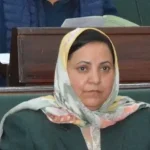Shri Mata Vaishno Devi ropeway issue is continuing. In November, ponywalas, shopkeepers and other stakeholders who were opposing the ropeway project that connects the Tarakote Marg with the holy shrine have again hit the roads to show resentment about the decision of the Shri Mata Vaishno Devi Shrine Board (SMVDSB).Previously, there was a hope generated when the stakeholders had shown the inclination to work out the solution to end the stalemate. But when the tourist season is at its peak with the pilgrims and tourists of all hues planning to spend their holidays in the preferred destinations, Shree Mata Vaishno Devi Sangarsh Samiti (SMVDSB) has given the call for 72 hour Katra bandh. Due to the bandh there will be closure of business establishments and no vehicles will ply on the roads. It is pertinent to mention that majority of pilgrims from across the nation and outside India plan to pay obeisance at the Shree Mata Vaishno Devi Ji Shrine on the year end and it leads to multiplier effect in the tourism economy of Jammu in particular and Jammu and Kashmir in particular. It is a well-established fact now that pilgrimage to the holy shrine has emerged as the successful model that has inspired many success stories in terms of managing the religious shrines that have a global following. There seems to be conflict between the traditional methods of managing the Yatra and the modern value addition meant to make the Yatra comfortable for the pilgrims. This conflict needs to be resolved to maintain the continuing pilgrimage model in place at Katra. Shree Mata Vaishno Devi Shrine Board (SMVDSB) and the Jammu and Kashmir Union Territory (UT) Government needs to analyse the situation that has emerged on ground and devise ways and means to end this logjam in the larger interests of the pilgrims and all the stakeholders. During the last few months the on-going conflict has created a negative marketing and this can have a bad impact on the influx of the pilgrims, who visit the Shrine out of deep faith. The District Administration has not been able to convince the stakeholders to end the hostility. There is a need to sensitise them about the benefits of the up gradation of the infrastructure so that they continue to render their services for the successful management of the Yatra. Resolution of this conflict has to end in the interests of all. SMVDSB must internalise that there is a need to reach out to the stakeholders and sensitise them about the project. Roles of the stakeholders may change with the up gradation of the facilities. But this does not mean that they will lose their livelihood. That is where the role of the SMVDSB comes into play. It must assure the stakeholders that their economic interests will be safeguarded. People of Jammu and Kashmir are watching this conflict keenly and any lapse can lead to unwanted political interference. That will end in no solution. It can be easily gauged from the situation that the stakeholders whoa re on agitationist want an assurance that their livelihood is not affected. SMVDSB and the UT Government must devise a formula that ends the conflict with the host population and enables the smooth conduct of the Yatra. This conflict of interest cannot be allowed to prolong. The SMVDSB and UT Government must constitute a committee of the experts from various fields that includes the stakeholders whoa re on the roads and build a consensus to devise a plan acceptable to all for the smooth conduct and management of the Yatra.
Mata Vaishno Devi Ropeway Issue

Sign Up For Daily Newsletter
Be keep up! Get the latest breaking news delivered straight to your inbox.
By signing up, you agree to our Terms of Use and acknowledge the data practices in our Privacy Policy. You may unsubscribe at any time.
Leave a Comment Leave a Comment
Stay Connected
Latest News
Recent Posts
- J-K: Doda administration provides essential facilities to homeless families after devastating flash floods
- FM Nirmala Sitharaman explains motive of GST reforms, says “focus will be to ensure rates cuts are passed to common people”
- Sakeena Itoo extends greetings to teaching community on Teachers Day
- Wildfires drive global air pollution, WMO warns of rising health risks
- Sakina Itoo criticises J&K Govt over Eid-e-Milad Holiday Date







